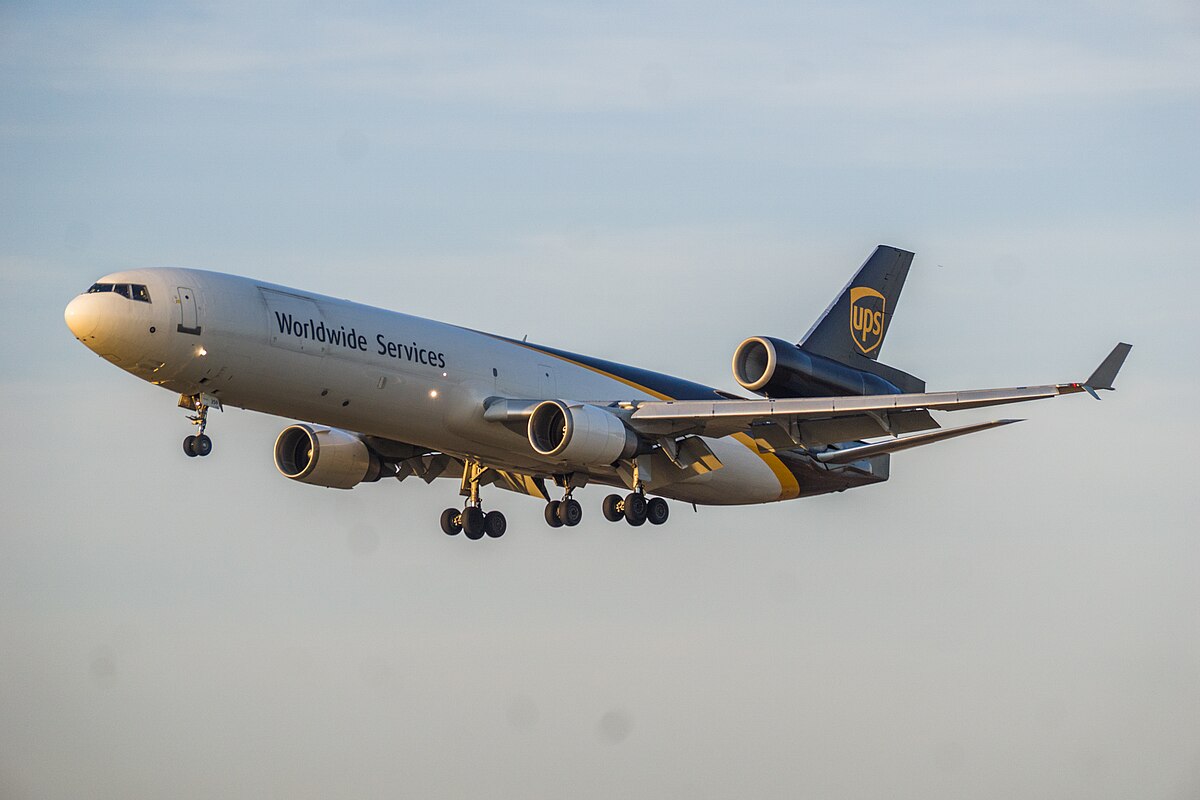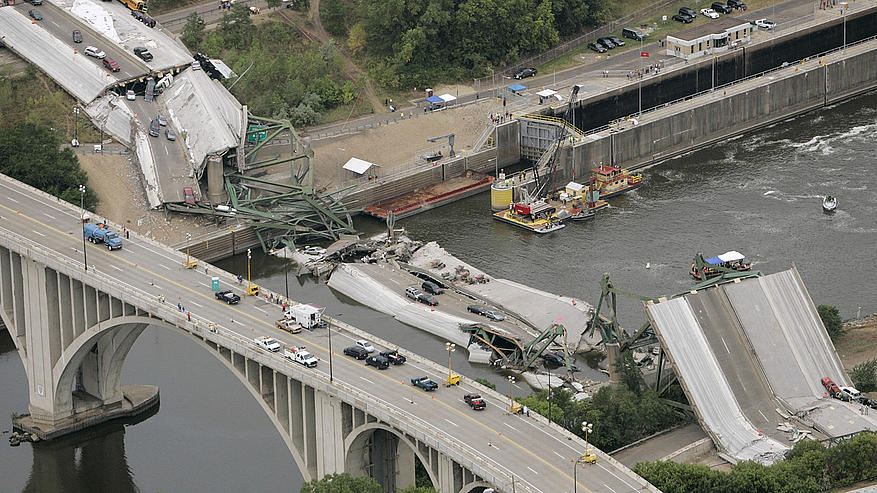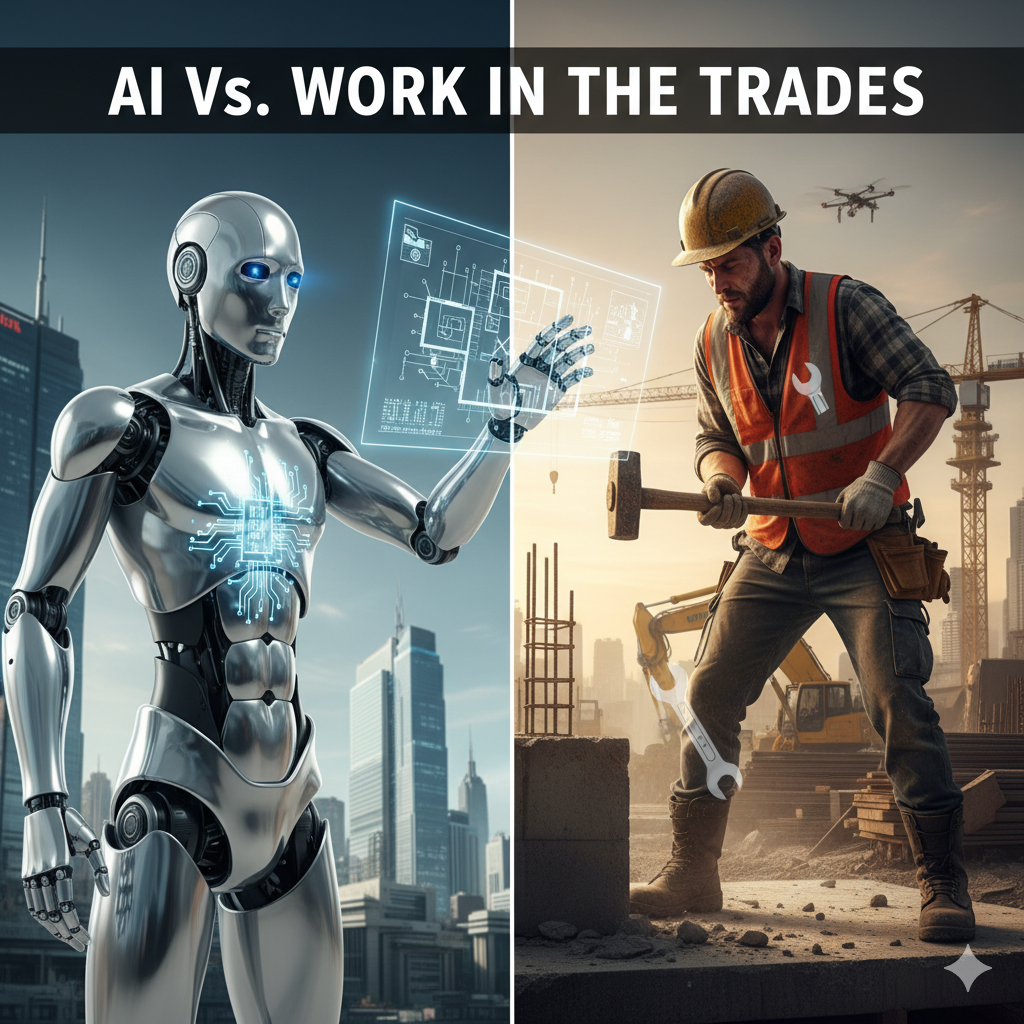The U.S. is betting its future on AI and data centers while ignoring a trillion-dollar physical collapse beneath its feet.

A Warning from the Sky
When a 34-year-old UPS cargo plane crashes in a fireball, it should not be seen as a freak accident — but as a preview of what’s to come. The incident on November 4, 2025, when UPS Flight 2976, a McDonnell Douglas MD-11 freighter, went down shortly after takeoff from Louisville, Kentucky, is a tragic warning about the state of America’s industrial backbone.
The aircraft was 34 years old — built in an era when Ronald Reagan was president — and had reportedly undergone repairs just weeks before the crash. Investigators found evidence of a left-wing fire and an engine detachment mid-takeoff, prompting UPS and FedEx to temporarily ground their MD-11 fleets “out of an abundance of caution.”
This was no isolated failure. According to IATA (2024), the most common age bracket for active cargo planes is 30 to 35 years, while fleets like UPS’s average 31 years old and FedEx continues to operate aircraft exceeding 40 years (Simple Flying, 2025).
This is not a sign of corporate thrift — it is a clear warning sign of systemic neglect.
America’s cargo network — the logistical bloodstream of its economy — is flying on borrowed time.0-40+ year-old planes being the standard, not the exception.
The Economics of Deferral

This problem extends far beyond aviation — it’s a symptom of the entire economy. When the U.S. economy rests on a knife-edge, companies are forced to delay critical capital expenditures. Instead of buying new equipment, they’re left to hope aging assets keep running.
Industrial suppliers like Alta and Hyster-Yale confirm this reality, reporting that customers are “deferring purchases” and “delaying spending” due to “ongoing economic uncertainty.”
When an economy fears the future, investment dies in the present.
An uncertain economy forces companies to delay essential, long-term capital investment in new equipment.
The Failing Foundation

These aging planes are just one part of a system-wide sickness. The infrastructure on the ground is collapsing too — and the American Society of Civil Engineers (ASCE) makes it painfully clear.
Their national “report card” is damning:
- Aviation (D+)
- Roads (D+)
- Public Rail (D)
The ASCE has identified a $3.7 trillion infrastructure investment gap, proving the system cannot keep up with replacement needs.
America is $3.7 trillion behind on its repair bill — and falling further every year.
Political Paralysis
The first engine of this decay is political paralysis. The government is so broken it cannot even agree to fund basic, essential services. Government shutdowns are no longer just political theater; they are a direct attack on the economy’s operational capacity.
In 2025, this dysfunction forced the FAA to order an “unprecedented” 10% cut in flights, simply because the “essential” air traffic controllers responsible for public safety weren’t being paid.
Dysfunction has a cost — and the bill is now coming due in grounded flights and broken systems.
Political paralysis directly cripples the economy and prevents long-term investment.
The Great Disconnect

The second engine of decay is America’s obsession with the virtual — a fixation so deep that it blinds us to the rot beneath our feet. While the physical world crumbles, the nation is in a mad rush to build a digital one.
Tech giants are spending at an astonishing pace: hundreds of billions are flowing into artificial intelligence (The Guardian, 2025), and as much as $7 trillion is earmarked for data centers and digital infrastructure (Allianz, 2025). The irony is staggering — we can instantly summon an AI image of the future, but we can’t keep a 50-year-old bridge from collapsing.
America is building a futuristic dream on a crumbling foundation, confusing technological progress with national strength.
This imbalance defines the modern economy. The entire stock market now leans precariously on just seven technology companies — the so-called “Magnificent 7” — whose valuations alone account for the majority of the market’s total gains. Investors and policymakers alike have convinced themselves that AI is the new industrial revolution, pouring capital into the cloud while ignoring the rusted steel and cracked concrete that hold the real world together.
Meanwhile, roads crumble, airports age, tunnels leak, bridges corrode, airplanes fail, and buses and trains limp along under deferred maintenance. The American Society of Civil Engineers has already warned that every major sector of physical infrastructure carries a D-grade — yet the warning barely registers in public discourse or policy priorities.
Every accident, from a bridge collapse to a plane crash, is dismissed as an isolated tragedy instead of what it really is: a symptom of systemic neglect. The U.S. isn’t suffering from a lack of innovation — it’s suffering from a misallocation of faith.
We’ve placed our bets on the next algorithm instead of the next generation of mechanical, civil, and systems engineers. We cheer for the expansion of AI servers while potholes swallow our roads. And unless we re-prioritize physical investment — unless we remember that a strong economy needs concrete before code — these accidents will not only continue; they’ll accelerate.
The next American collapse won’t be digital — it will be physical, and it will be entirely of our own making.
The Bill Comes Due
The true stress test for the American economy isn’t inflation or interest rates. It’s whether the U.S. can survive its own systemic neglect.
We are an economy at risk of a total, physical, and entirely preventable breakdown — the predictable result of decades spent worshiping innovation while abandoning maintenance.
The next crisis won’t be digital — it will be physical.
Prioritizing a virtual economy while ignoring physical foundations creates a risk of systemic breakdown.
The Reckoning Ahead
America’s crisis is not a mystery — it’s a matter of priorities. We are a nation that can summon infinite computing power but can’t keep the lights on in its airports. We celebrate artificial intelligence while ignoring actual intelligence — the kind that designs bridges, repairs engines, and maintains the systems that make life possible.
We have mistaken innovation for advancement, and in doing so, we’ve built an empire of code on top of crumbling concrete.
The warning signs are everywhere: collapsing highways, grounded aircraft, underfunded transit systems, and a generation of skilled tradesmen aging out faster than they can be replaced. These are not abstract threats — they are the structural limits of an economy that has abandoned the physical in pursuit of the virtual.
If America continues to trade steel for silicon, the next great crash won’t come from Wall Street — it will come from a physical failure that no algorithm can patch, no data center can reroute, and no bailout can fix.
The choice is still ours to make. We can rebuild, redirecting our brilliance, wealth, and ambition toward the tangible systems that built this country in the first place — or we can continue pretending that the digital economy can stand on foundations that are literally falling apart.
Because the truth is simple:
The future will not be written in code if the world it runs on collapses first.
References
- Allianz: Data Center Construction Risks
- ASCE 2021 Infrastructure Report Card
- Hyster-Yale Q3 2025 Results
- IATA: Older Cargo Fleets and Emissions
- University of Illinois: Government Shutdown & Air Travel
- Simple Flying: FedEx & UPS Fleet Ages
- StockStory: Alta Equipment Spending Trends
- The Guardian: AI Valuations and Spending
- Washington Post: FAA Flight Cuts, 2025
Socials
X:https://x.com/breakingmetrics
Instagram:https://www.instagram.com/breakingmetrics
Substack:https://substack.com/@breakingmetrics
Stay ahead of the markets. Subscribe to Breaking Metrics for in-depth analysis on key levels, sentiment trends, and the forces shaping stocks, crypto, and the economy. Fraywire+ Members get insights like this before anyone else. Don’t miss a beat—subscribe today, for free.
The information provided in this newsletter is for educational and informational purposes only. It does not constitute financial, investment, legal, or tax advice. The content is not personalized to the needs, objectives, or financial situation of any individual reader. All investments carry a high level of risk, including the potential for loss of principal. The market analysis, predictions, and opinions expressed are based on the information available at the time of writing and should not be considered as a guarantee of future performance.
Please conduct your own research and due diligence before making any investment decisions. It’s advisable to consult with a qualified professional regarding your specific circumstances before taking any action based on the information presented here. The author and publisher of this article disclaim any liability for any direct or incidental loss incurred by applying any of the information in this article, including but not limited to, any loss or damages resulting from errors, omissions, or inaccuracies in the information provided. Remember that past performance is not indicative of future results.
Stay ahead of news and sentiment with www.glideslope.ai.

